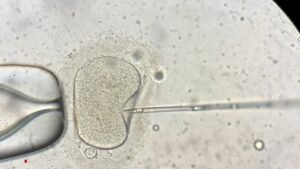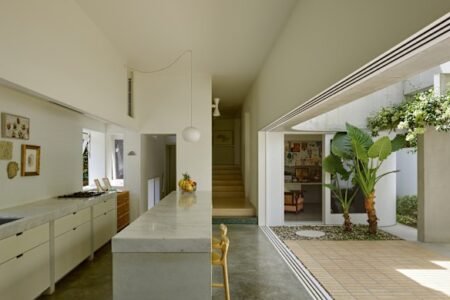Here’s a quiz question for Peter Dutton as he imagines waking up victorious on May 4, having blithely revealed his preference “any day” for Sydney over Canberra, and life in Kirribilli House, the prime minister’s official Sydney residence, over life in The Lodge.
Peter Dutton has said he will move into Kirribilli House, rather than The Lodge, if elected. Credit: Jamie Brown
Why did the people of NSW vote “No” in the referendums of June 1898 in which the Australian colonies were invited to approve the draft Commonwealth Constitution Bill before its adoption as an act of the imperial parliament? It’s unlikely that Mr Dutton knows that one answer can be found in section 125 of the Constitution. Quite possibly, he has never got that far in reading the Constitution (there are 128 sections), despite his recent interest in constitutional referendums.
Section 125 tells us, among other things, that “[t]he seat of Government of the Commonwealth shall be determined by the Parliament … and shall be in the State of New South Wales, and be distant not less than one hundred miles from Sydney”. The version of this section as it stood in June 1898 simply left the choice of the “seat of Government” – the federal capital – to the new parliament after federation was accomplished. The people of NSW objected. NSW, they maintained, had a historical right to the federal capital. It was the “mother colony”, the oldest, the most populous and, after the depression of the 1890s, the most prosperous colony. If the choice of the site were left open, Victoria might claim it. Melbourne might be chosen as the capital!
This was not the only NSW objection to the draft Constitution, but the federal capital issue stirred strong parochial sentiments. Victoria, South Australia and Tasmania had voted Yes in their 1898 referendums (Queensland and Western Australia held theirs later). Technically, under the enabling acts for the referendums, any three colonies could go ahead and federate. But everyone knew that federation was inconceivable without NSW. The other colonies were willing to amend the draft Constitution to get NSW back in, but not to give it everything it wanted.
In 1899, a conference of the colonial premiers came up with a compromise. NSW could have the federal capital, but Sydney would be unequivocally ruled out. In the meantime, as a sweetener to Victoria, the federal parliament would sit in Melbourne until “it meet at the seat of Government”. (This arrangement held until 1927, when what is now Old Parliament House was opened in Canberra by the Duke of York, later George VI.)
Loading
In 1899, another round of referendums was held, with Queensland coming on board (WA waited until 1900). All were successful. The Constitution Bill, as amended, was approved by the colonial parliaments and enacted in Westminster, and Australia’s federation went ahead.
The Constitution that governed it was designed by the framers as a federal instrument. The institutions it created were built around federal principles, and largely designed to give equal powers to both the small and large states. At the same time, it established democratic institutions, representing the Australian people as equal members of the whole nation.
Prime ministers who choose to live in Sydney (John Howard was the first to do so) disregard this history and its significance for Australia’s democracy. Their choice sends a message of Sydney dominance – the very thing NSW wanted in 1898 and the other colonies resisted – a message that Canberra, despite being the home of Australia’s great national and constitutional institutions, is not really the centre of the Commonwealth. It is also a message that the personal preferences of individual politicians, their comfort, and their aesthetic tastes, should be prioritised.
Read the full article here
















